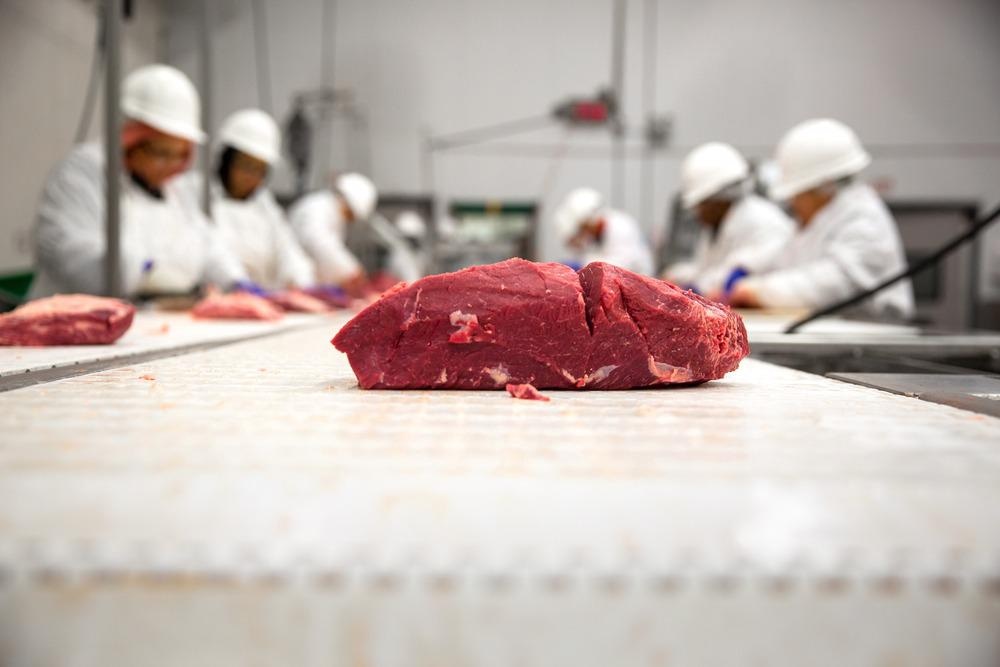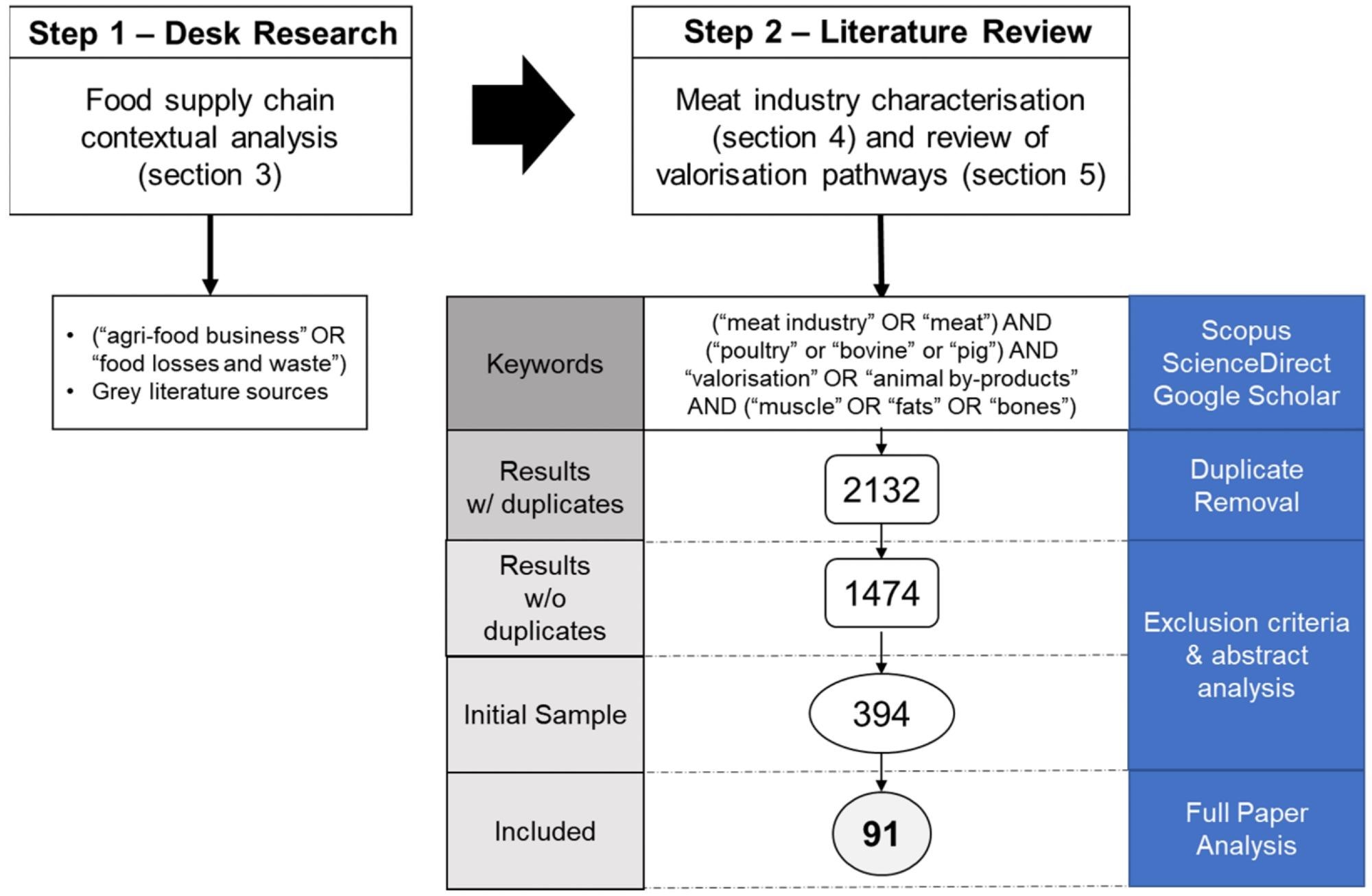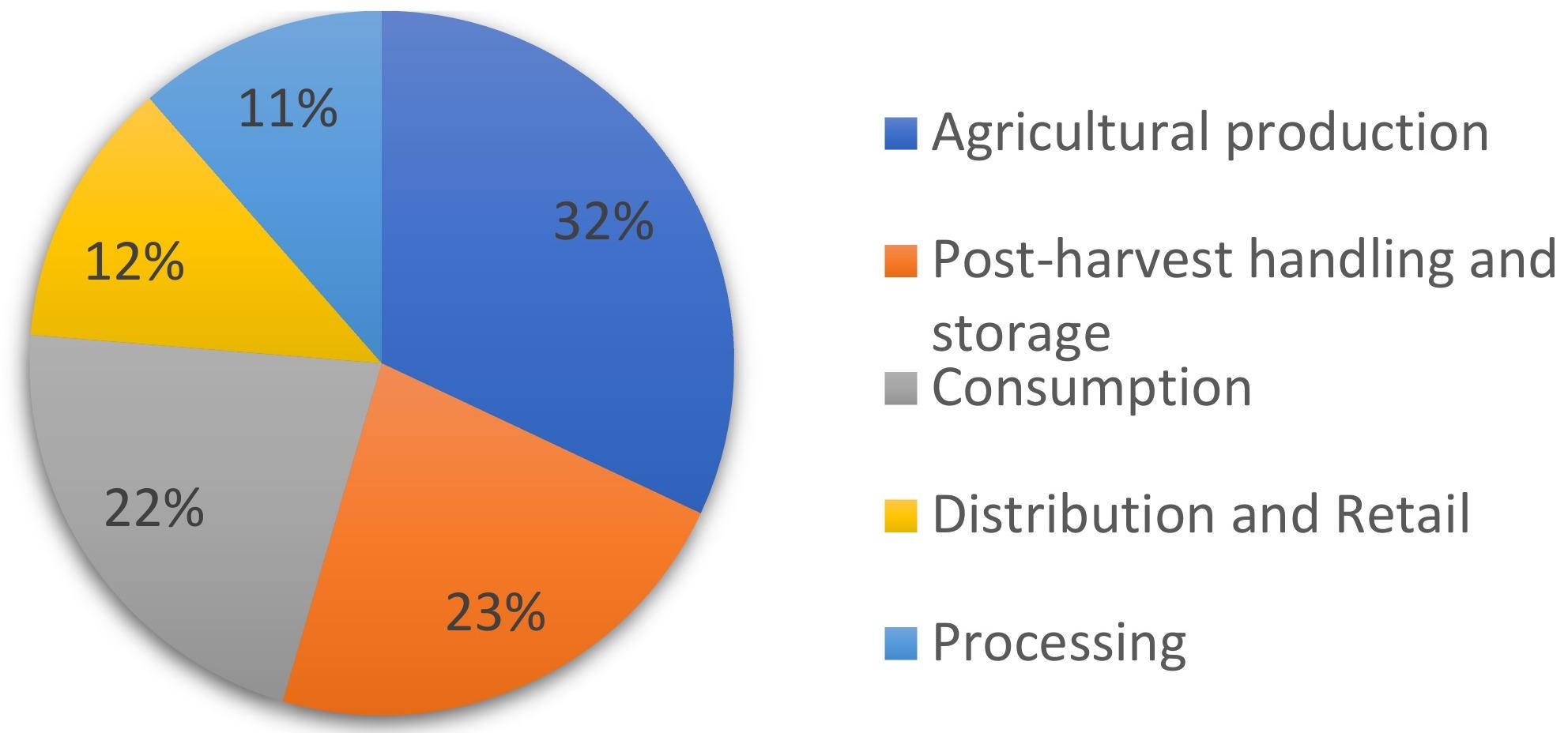Writing in the journal Sustainability, researchers from Portugal and Spain have analyzed the loss of animal byproducts in food retail and the valorization of waste streams. The research will help to improve circularity in the food industry, which currently wastes a staggering amount of otherwise useful food products every year.

Study: Analysis of the Food Loss and Waste Valorisation of Animal By-Products from the Retail Sector. Image Credit: El Nariz/Shutterstock.com
The Global Food Industry: Emissions and Food Waste
Feeding a growing world population requires food production on an industrial scale, with the modern food industry employing billions of people worldwide. The global food service market is predicted to be worth $4.2 trillion in 2024, and worldwide, a staggering amount of land is used for the growth of crops and the rearing of animals. Declining costs and nutritional demands increased meat consumption worldwide by 18% between 2008 and 2018.

Research methodology. Image Credit: Pinto, J et al., Sustainability
More than seventy billion animals are reared annually worldwide to feed the global population. The majority of emissions in the food industry come from livestock rearing, with the biggest single emissions source being methane. Ruminant animals account for 40% of greenhouse gas emissions from the agricultural sector. The meat industry is responsible for 14.5% of global greenhouse gas emissions, and agriculture produces significant amounts of pollution and uses a vast amount of land.
With the growth in global food production comes another issue: waste. In the EU, fourteen million tons of meat are lost and wasted every year and globally, according to the UN, about one-third of all food is lost or wasted globally, with the problem particularly pronounced in developed countries. Seventy-six percent of all meat waste in the EU is produced by retail and households.
Retail and household waste has the most environmental and economic impact in terms of emissions, energy, and resources, not just from this step, but also accumulated from all the previous steps in the production and supply chain, including rearing, slaughtering, processing, and transport. Moreover, meat is highly perishable, and packaged products are difficult to recycle, meaning that a huge amount of otherwise valuable meat products is sent to landfills or incinerators.
Therefore, there is a pressing need to reduce waste in the food industry, as well as find uses for waste products along with all steps of the production and supply chain, from farm to plate. Valorizing waste streams will make better use of resources and create a more sustainable and circular food industry.
The Study
The study published online in Sustainability this week has focused on the retail sector. The reasons for this are twofold, according to the authors. Firstly, retail activities are important in terms of waste production according to current literature, due to the high volume of commercial products and its influence on the final destination of waste. These destinations include incineration, landfilling, donation, and recycling. Whilst incineration is a value-added waste stream as it produces energy, heat, and biomass, processes such as recycling, reuse, and waste prevention are preferable.

Share of global food loss and waste by stage of the food supply chain (100% = 1.3 billion tonnes). Image Credit: Pinto, J et al., Sustainability
Additionally, landfilling and incineration lead to the pollution of soils, air, and water supplies through the leaching of by-products into the environment. Furthermore, food waste can be separated from retail waste streams and turned into value-added products.
Secondly, slaughterhouses, although they produce significant amounts of animal product waste including dead animals and carcasses, there are specific regulations governing their disposal which limit the possibility of using this waste for value-added products.
The study has three main objectives: a contextual analysis of the food supply chain from the perspective of sustainability, the identification and characterization of food waste and valorization of by-products, and the identification and characterization of technologies for valorization from the perspective of promising emergent alternatives and industrial-scale processes.
The research employed a multi-method approach, combining desk research, snowballing, and a systematized review process of current literature (110 studies were analyzed.) Desk research was used to identify critical issues in the agri-food industry regarding food loss and waste. Three database platforms, Google Scholar, Scopus, and ScienceDirect, were used to find journal papers, conference proceedings, and articles published between 2000 and 2022.
Factors including the cause of food waste been discussed, along with the influence of the retail sector on agriculture and production, food processing and packaging issues (such as over-production and quality assurance measures which result in high levels of food waste) waste during distribution, household waste, and the impact of food labeling. Additionally, the environmental, economic, and social impacts of food waste have been analyzed and discussed in the paper.
The authors have also included a comprehensive analysis of food waste and consumption. Additionally, there is a discussion of regulatory and legal frameworks. Valorization of animal by-products such as muscles, bones, and otherwise commercially unimportant materials have been discussed, including industrial symbiosis and the current and emerging industrial processes and technologies.

Food loss and waste in each stage of food supply chain. Image Credit: Pinto, J et al., Sustainability
Concluding, the authors have stated that, whilst there is still much to be done, there is significant potential for the valorization of meat products. Finally, the authors have concluded that new insights into the technical and economic feasibility of emerging technologies will require testing at a pilot scale, with significant cooperation between retailers, industry, governmental organizations, and biorefineries.
Further Reading
Pinto, J et al. (2022) Analysis of the Food Loss and Waste Valorisation of Animal By-Products from the Retail Sector [online] Sustainability 14(5) 2830 | mdpi.com. Available at: https://www.mdpi.com/2071-1050/14/5/2830
Disclaimer: The views expressed here are those of the author expressed in their private capacity and do not necessarily represent the views of AZoM.com Limited T/A AZoNetwork the owner and operator of this website. This disclaimer forms part of the Terms and conditions of use of this website.